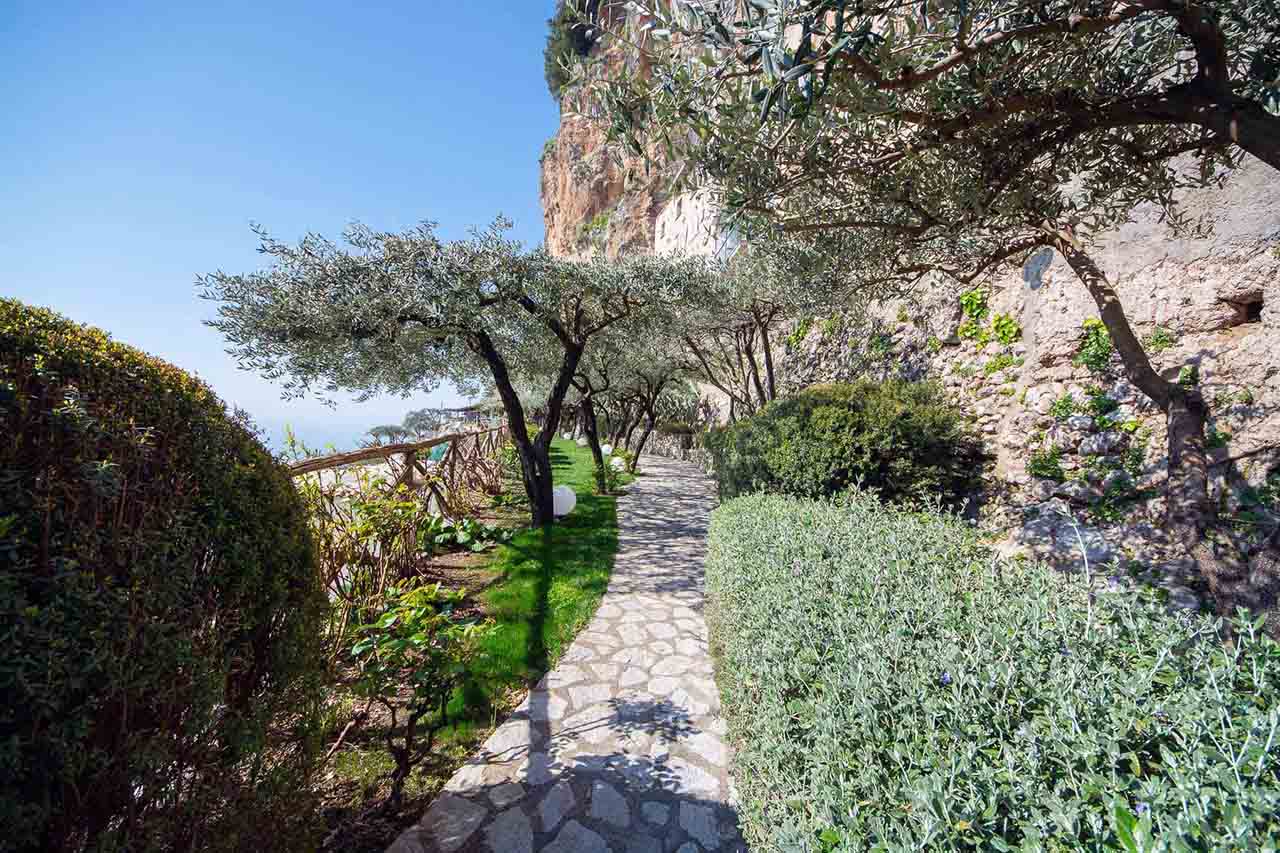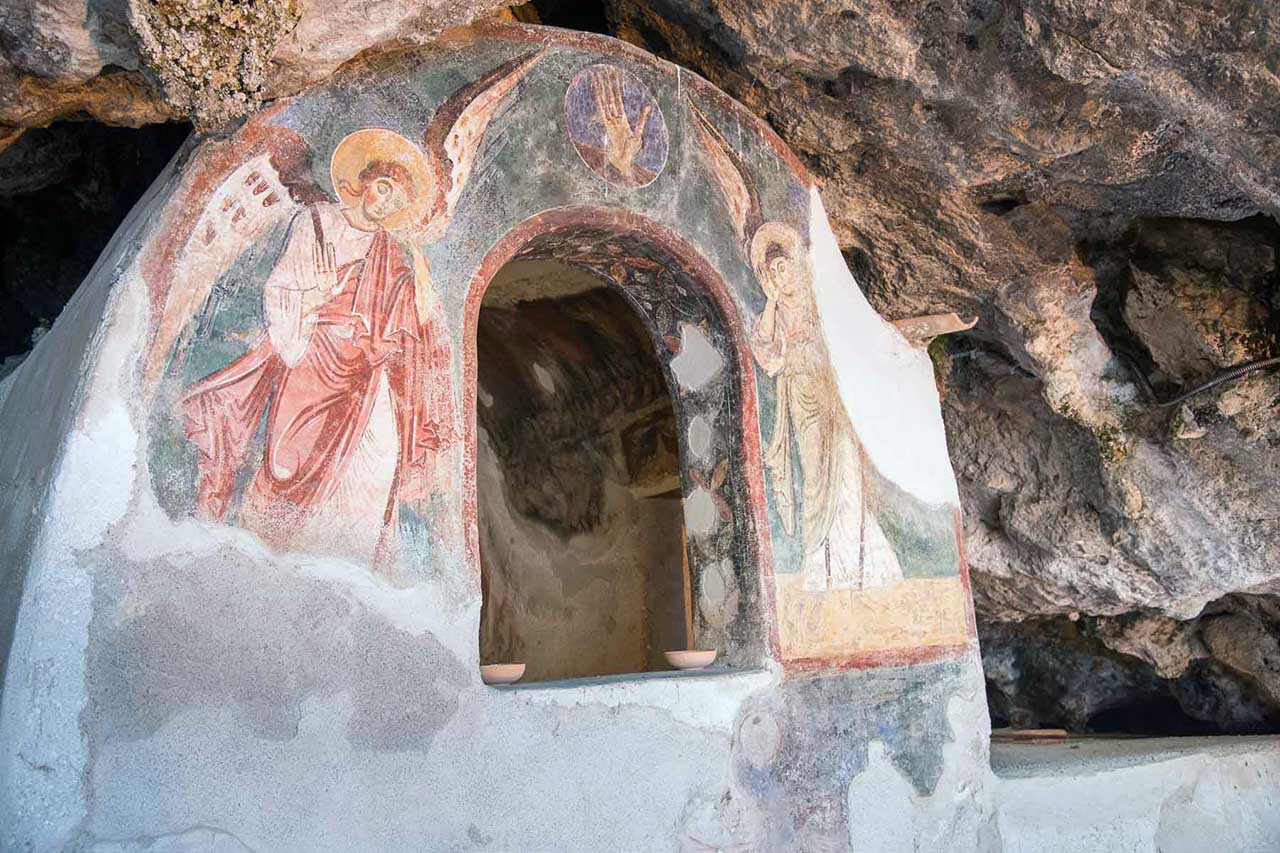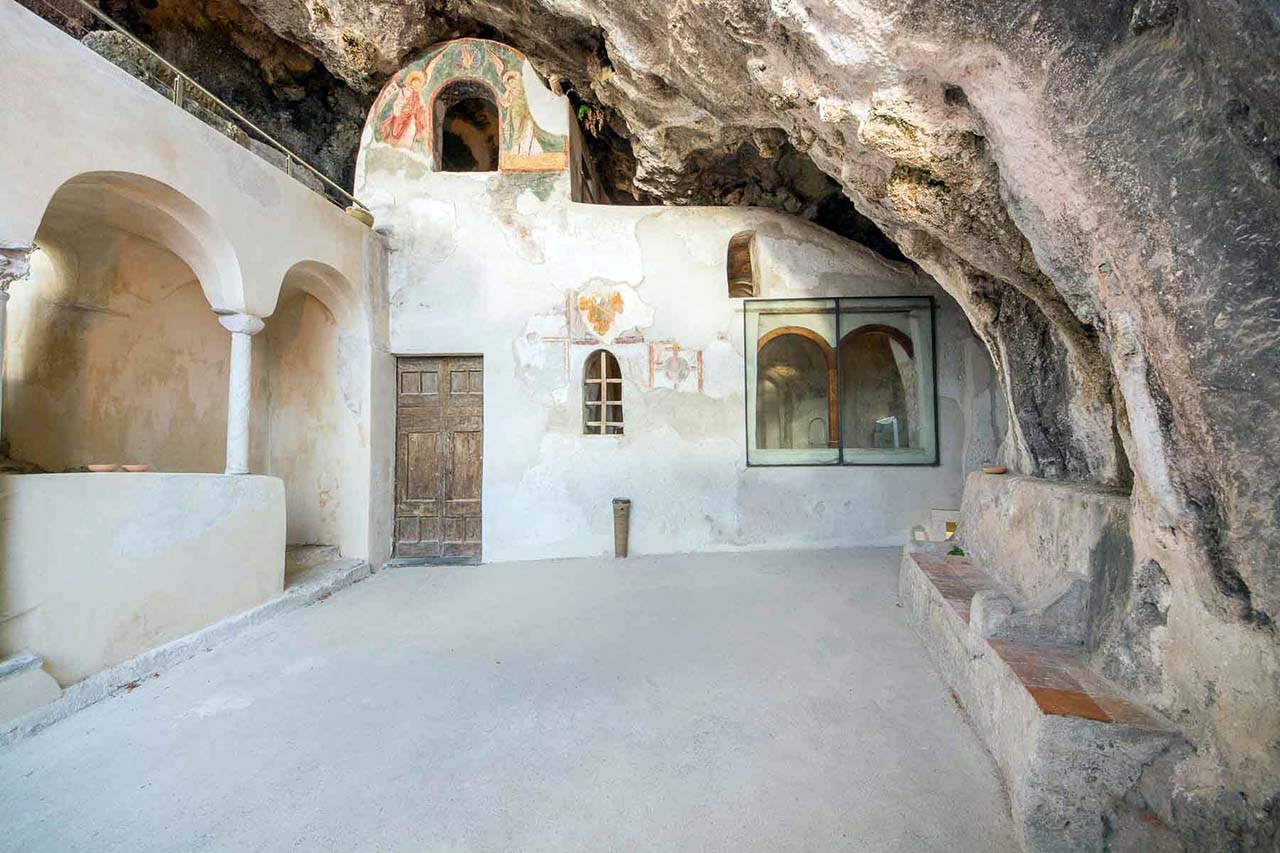Three olive oil businesses in Maiori, Ravello, and Tramonti
May 22nd, 2023. By Annamaria Parlato, photo by Salvatore Guadagno
Churches created by excavating in the solid natural rock are real architectonic masterpieces, and they can be seen all over Italy, from the North ‘to the South. Once upon a time, life was shaped around religious activities and fieldwork, so churches played a significant role in the communities. Perfectly blending in the landscapes today, these evocative structures are a sight for religious believers and tourists.

A social and religious sacred site
In Maiori, during the Middle Ages, there were various monasterial complexes, and for this reason, the village turned into one of the most important ecclesiastical centers of the Amalfi duchy. In the Falerzio Mount, different religious orders, such as Benedictines, Basilian monks, Cistercians, and de Camaldolese order, were settled. In 902 a.C, Elias of Enna (also known as Saint Elias the Younger) chose these places to meditate. It is an essential anecdote since the first form of monasticism on the Amalfi Coast is believed to come from the hermitage practice.
He wasn’t the only one: Saint Alferio, the founder of the La Trinità della Cava monastery, came to these mountains to isolate and meditate. As we were saying, various monasteries grew around the Amalfi Coast: they were all self-sustained as the monks worked hard, producing oil and wine, an essential beverage for the Christian cult. Their efforts turned their religious centers into advanced agricultural sites. Some other important abbeys include S. Marina de Stellis (VIII century), S. Nicola de Carbonaris, and Santa Maria de Ercule (979 a.C).

A Middle Ages treasure
Santa Maria dell’Olearia is a monasterial complex founded between 973 and 987 a.C by the hermit Peter and his nephew Giovanni and is composed of three little churches differently frescoed. The Italian name Olearia refers to olive trees surrounding the church, and a Middle Ages oil mill can be seen on the site.
The frescoes visible in the two churches, one dedicated to the Virgin Mary and the other to Saint Nicolas, had been attributed partly to the Benedictine monk Leone Amalfitano (XI century). Paintings of the “Virgin Mary with Saints” are still intact in the chapel situated at the lowest level.
In contrast, one can see, a level above, images representing Jesus Christ’s life events. In the highest point of view, almost completely hidden in the rocks, there is the Church of Saint Nicholas, displaying various frescos of the Saint’s life made by artists from the XI and XII centuries.

Colline Salernitane, the PDO olive oil
Olive oil cultivation is an ancient art form here in the Campania region. Historically, this plant reached our shores thanks to the Fences and the Greeks. They exported olive trees in their lands to grow their oil production since it was an important asset not only for food purposes. Indeed, olive oil was perfect for creating perfumes and ointments, and it was ideal for burning as a gift to their gods.
Moreover, various frescos from the Pompeii excavations show the olive-growing sector’s importance during the Roman Empire. The Colline Salernitane PDO extra-virgin olive oil comes from local varieties grown in these lands forever. For this reason, it encompasses the originality of this specific landscape, culture, and assets.
This precious PDO olive oil production is set in 86 municipalities from the Salerno area, including the Amalfi Coast, Valle del Calore, the Piacentini mountains, Alburni l’Alto e Medio Sele, the Tanagro, and Vallo di Diano. The only varieties of olives that are allowed for the Colline Salernitane oil are Rotondella, Frantoio, Carpellese, and Nostrale, and they have to be at least the 65% of the total product; the Ogliarola and Leccino varieties can be used, but they cannot exceed the 35% of the total. At last, some other local olive types are allowed for a maximum of 20%.
Even if some businesses nowadays use more innovative machinery for the picking and cutting phase, the olives are usually produced with traditional techniques. Only exact processes are allowed to extract this type of oil to keep the quality of the fruit intact. The Colline Salernitane olive oil got the PDO certification in 1997. The national accreditation occurred with the ministerial decree 6th August 1998 published on the Gazzetta Ufficiale della Repubblica Italiana n. 193 dated 20th August 1998.

The Raffaele Palma company in San Vito di Maiori
The Azienda Agricola Biologica Raffaele Palma company is located in San Vito di Maiori, near the Church of Santa Maria dell’Olearia. Founded in 2006, thanks to its owner’s ambitious idea, the company had always been focused on protecting the land and implementing eco-friendly and biological policies.
They worked hard to bring back to life neglected olive groves, and, at the same time, they successfully planted new vineyards in harmony with the local flora and fauna. All these efforts helped the production of the Colline Salernitane PDO extra-virgin olive oil. The company prefers to create the oil by placing nets under the plants to harvest the olives without machinery. “This natural oil is produced with local varieties; our olive groves are situated in terraces 50 to 300 meters above sea level. We use Carpellese, Leccino, Rotondella, and Ogliarola. With it, we can achieve a high-quality oil with a medium fruity flavor with spicy and strong notes balanced by hints of thistle, artichoke, green leaf, and unripe tomato. It’s ideal for serving it with delicate dishes so that the oil can accentuate the main ingredient, such as fresh fish or a high cut of meat. But it’s also perfect with soups and fresh cheeses.” explains Raffaele Palma, the company’s owner.
Their extra-virgin oil, Nodo/Dono, won significant accolades in this sector. The logo shows the knot of the olive trunk and works as the perfect image of the profound bond with the ground, a source of memory, gifts, and peace.
Terre Operose in Tramonti
“Terre Operose” is an agritourism business located in Tramonti, more accurately in the tiny fraction of Novella. The spouses Lisa Ruocco and Luca Bove built up this business in a location immersed in the rich Mediterranean vegetation surrounded by the Lattari Mountains. Lisa produces quality wines while growing fruits, vegetables, legumes, and olives here. They can make an extra-virgin oil and one flavored with Amalfi Coast lemons.
“The oil we produce has a green-yellowish color and a light fruity flavor with some bitter notes. We use the Frantonio and Leccino varieties of olives. – says to us, Lisa – It’s perfect for dressing salads, and vegetables and to be used with soups. Simultaneously, the lemon olive oil is more suited for seafood dishes, a typical farro salad, and even fresh cheeses such as the cow’s ricotta of Tramonti”.

Gusti&Delizie in Ravello
In 2016, Vincenzo di Palma and Margherita Cioffi opened up Gusti e Delizie in Ravello. “We wanted to fulfill a desire while, at the same time, creating a unique experience that would focus on the extra-virgin olive oil. Time has passed in Ravello since the days when oil mills were scattered anywhere on the territory. It was so common that most families had stone mills in their home cellars, just like my grandfather had. I think that tradition is important for our future. That’s why I wanted to honor it by creating something innovative. I’m a sommelier and also a vineyard taster, so I decided to expand my field to oil as well.” explains Vincenzo.
The Oleoteca (a place where you only find oil) is the only one in all South of Italy to be recognized internationally, and today has more than 40 labels. They also own two labels, “Villa San Cosma,” referring to the olive groves’ area with the lemon groves and vineyards. “In my terraces, we grow Minucciola, a type of olive that is easier to find in the Sorrento area, Frantoio and Rotondella. Because of that, my olive oil is a medium fruity oil, very balanced, with notes of lettuce, green apple, and almonds; the aroma is slightly herbal with almonds and pine nuts notes. It’s perfect for any dish of Mediterranean cuisine and also ideal to fry. We also produce an extra-virgin olive oil made with the company olives and the lemon zest of the famous sfusato Amalfitano. This type of oil is recommended for light dishes, summer pasta dishes, and even desserts”.
The importance of olive grooves for the Amalfi Coast’s future is not only a beautiful component of this unique landscape. They also play an essential role in protecting the natural environment of the Amalfi Coast. Since they are usually located on terraces overlooking the sea, it’s not easy for them to work in these circumstances. But this way, terraces retain soil and prevent downstream slides and landslides.
Olive’s growing value is essential for its economic and productive role and its irreplaceable function in hydrogeological control. In certain Amalfi Coast areas, the olive grooves are associated with lemon groves and vineyards, representing a tremendous productive plan. We can only hope that people will pay more attention to this sector in the future, which will increment biological olive oil production.
